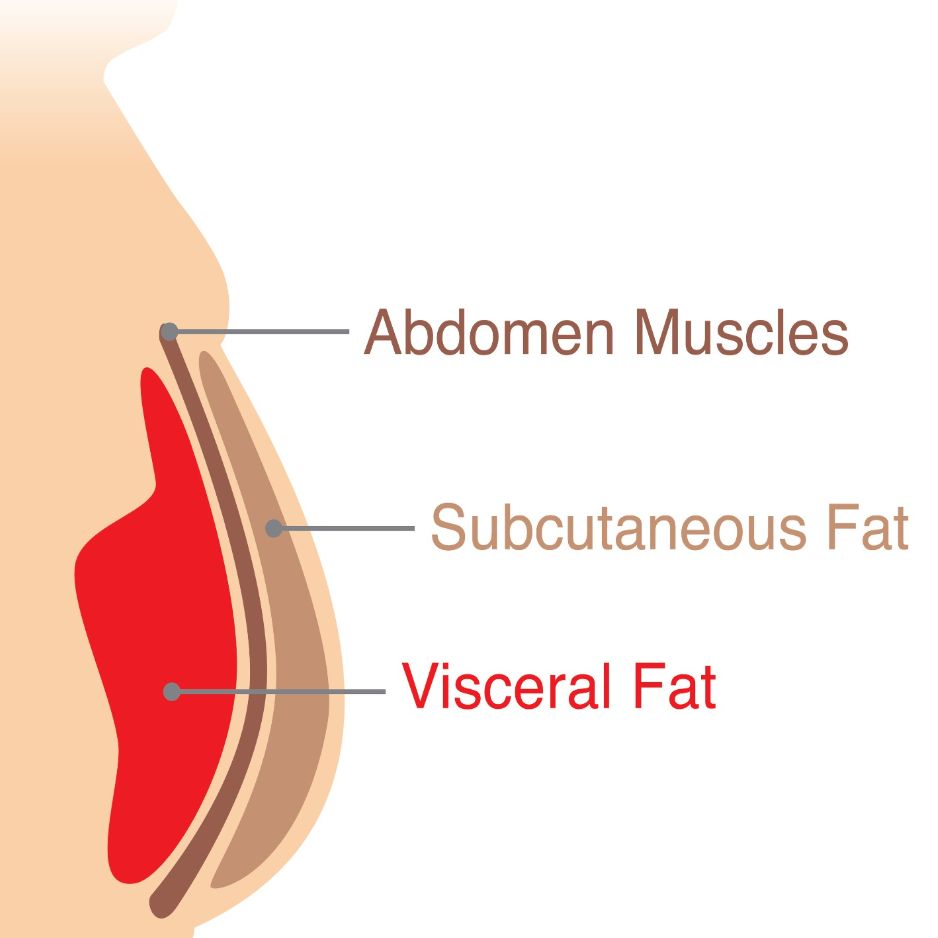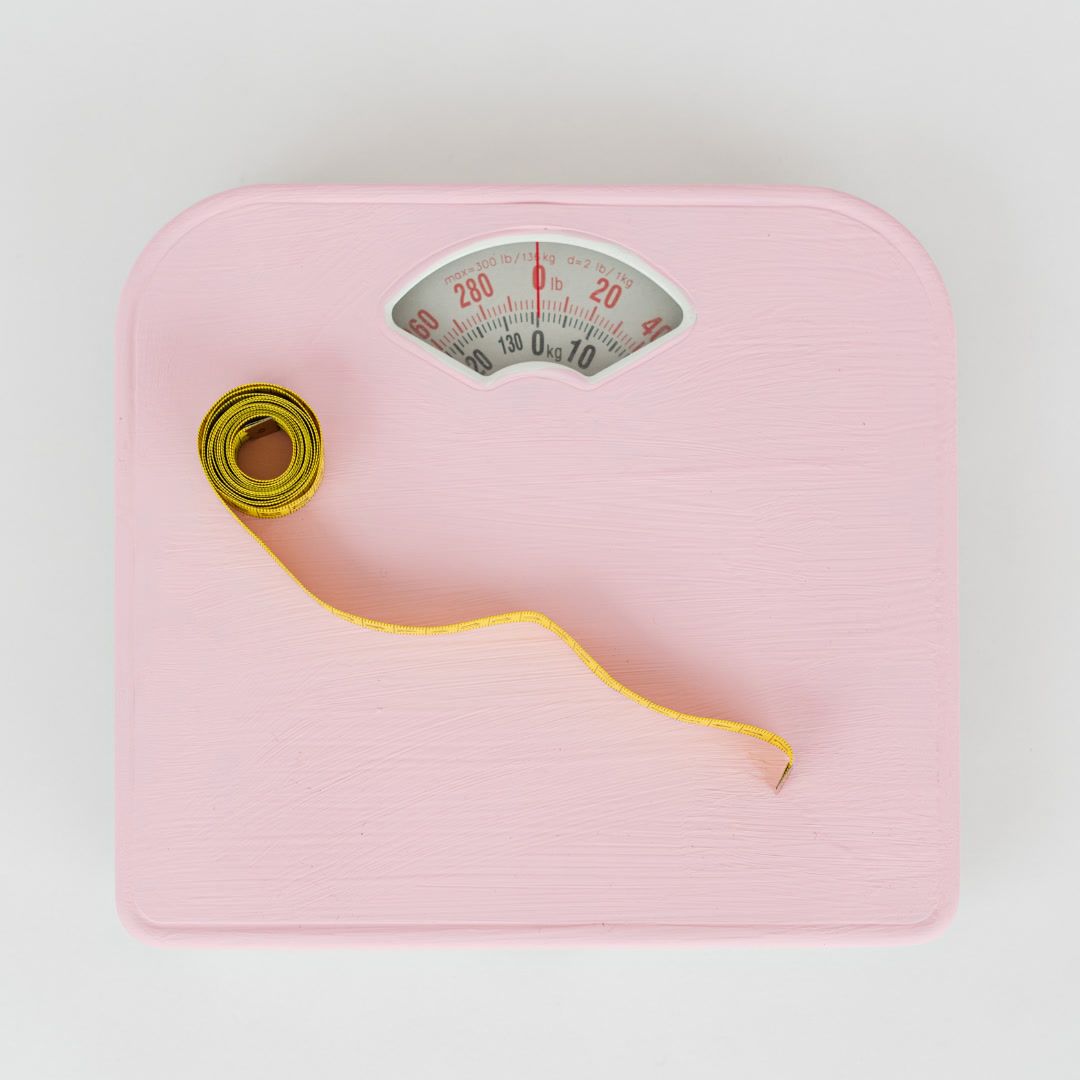Bodyweight Exercises: Beginner to Advanced Blueprint
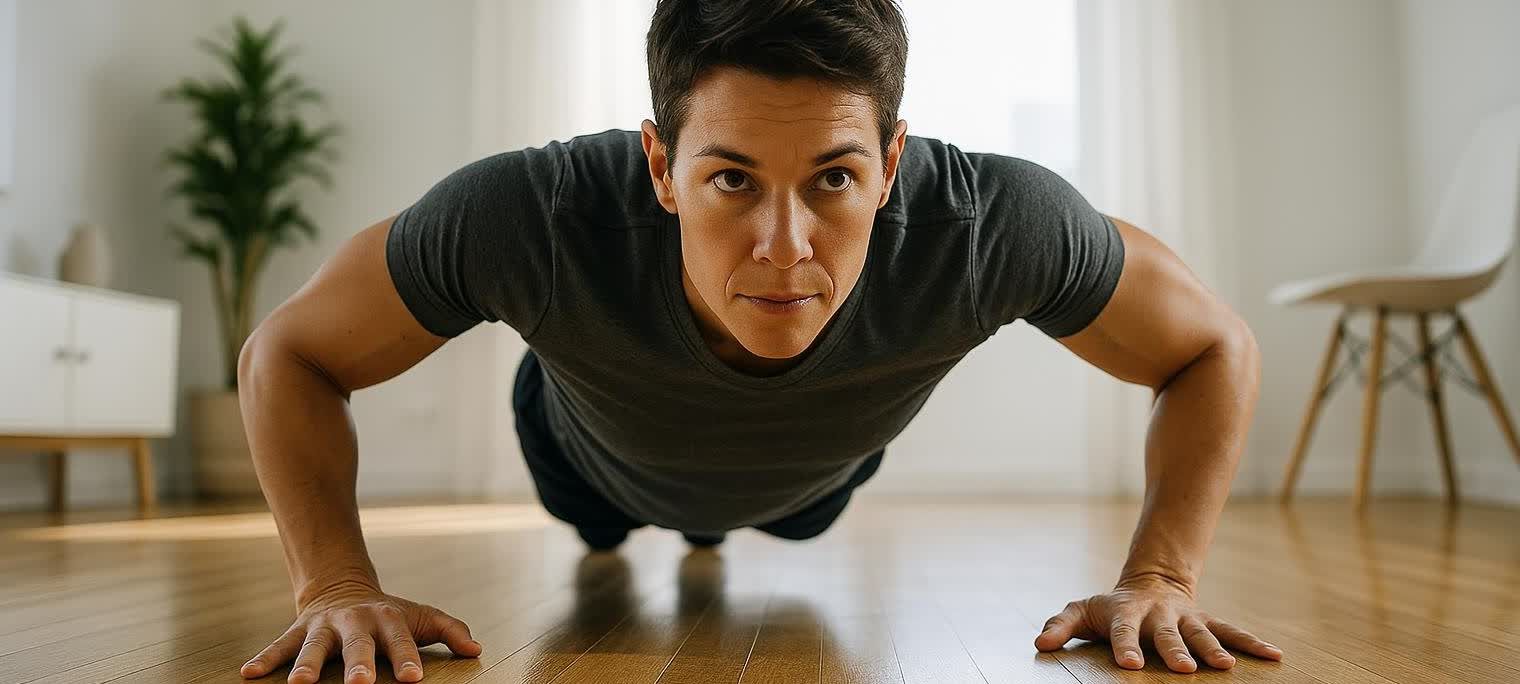
Bodyweight Exercises: Beginner-to-Advanced Blueprint
Have 15 square feet of space and a willingness to sweat? That’s all you need to build muscle, crank up your heart rate, and promote fat loss—no dumbbells required. Bodyweight training leverages the most convenient piece of equipment you own: you. From travelers in hotel rooms to new parents squeezing in naptime workouts, bodyweight routines are the Swiss-Army knife of fitness.
This guide distills the latest exercise science into an easy-to-follow progression system so you can:
- Master foundational movement patterns
- Scale exercises for any fitness level
- String moves together into time-efficient circuits
- See measurable changes in lean mass and fat mass
Why Bodyweight Training Works
Muscle Activation Proven by EMG
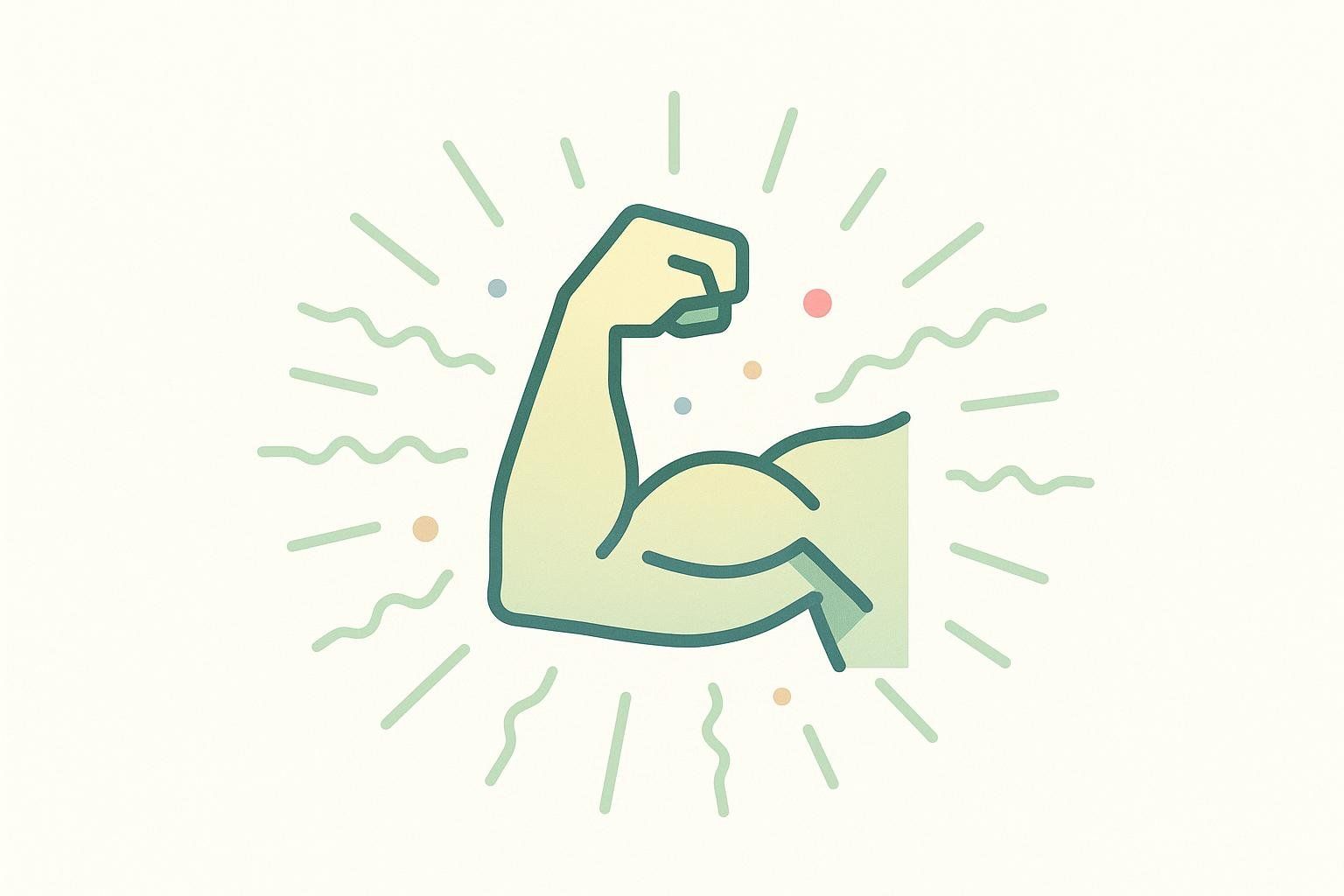
Electromyography (EMG) studies show classic calisthenics like push-ups, squats, and pull-ups generate more than 60 percent of maximal voluntary contraction in their target muscles—a threshold often cited for hypertrophy stimulus, according to a 2014 study in the Journal of Strength and Conditioning Research.
Functional Strength & Mobility
Because the load is your own mass, bodyweight drills automatically recruit stabilizers and improve joint control—key for injury prevention and everyday movement. Moves such as planks and isometric holds train core stiffness that carries over to everything else you do.
Anywhere, Anytime Consistency
No commute to the gym means fewer skipped sessions. Consistency beats perfection, and regular activity is what the American College of Sports Medicine cites as the biggest predictor of long-term health benefits (physical activity guidelines).
How to Structure an Equipment-Free Workout
| Goal | Sets | Reps / Time | Rest |
|---|---|---|---|
| Muscle growth | 3–5 | 6–15 reps (or 30–40 s) | 60–90 s |
| Muscular endurance | 2–4 | 15–25 reps (or 45–60 s) | 30–45 s |
| Fat-loss circuit | 4–6 moves back-to-back | 30 s on / 15 s off | 90 s between rounds |
Tip: Progress by manipulating tempo (e.g., 3-second lowering), range of motion (elevated feet), or leverage (one-arm/one-leg variations) before adding volume.
The Exercise Library
For best results, master the form at your current step before advancing to the next progression.
1. Push Pattern

Beginner: Knee Push-Up
How to:
- Start in a straight-arm plank with knees on the floor and hands slightly wider than shoulder-width.
- Brace your core so your head, shoulders, hips, and knees stay in one line—no sagging hips.
- Lower until your chest is an inch from the floor, elbows about 45° from the torso, then drive the floor away and exhale to return.
Progression Ladder:
- Standard Push-Up (on toes)
- Decline Push-Up (feet elevated to shift more weight forward)
- Archer Push-Up (shift weight side-to-side to overload one arm)
- One-Arm Push-Up (full unilateral load)
Muscles: Pectorals, anterior delts, triceps
2. Pull Pattern
Safety Note: Make sure the door frame, bar, or support structure you’re using can fully support your bodyweight before starting any pull variations. If there’s any doubt—skip the move or find a sturdier anchor.
Beginner: Doorway Row
How to:
- Stand facing an open, sturdy doorway and grip both sides of the frame at about waist height.
- Lean back until your arms are straight and your feet are flat on the floor.
- Maintain a straight line from head to heels, core tight.
- Pull your chest toward the frame by driving elbows back, pause briefly, then lower with control.
Progression Ladder:
- Inverted Row (position yourself under a rock-solid table that you’ve tested to hold your full bodyweight—skip entirely if the surface wobbles)
- Feet-Elevated Inverted Row (place heels on a chair for more load)
- Single-Arm Doorway Row (reduce base of support to overload one side)
- Bodyweight Pull-Up (requires a pull-up bar)
- Chest-to-Bar Pull-Up (requires pull-up bar for extra range)
Muscles: Lats, biceps, mid-back
3. Squat Pattern
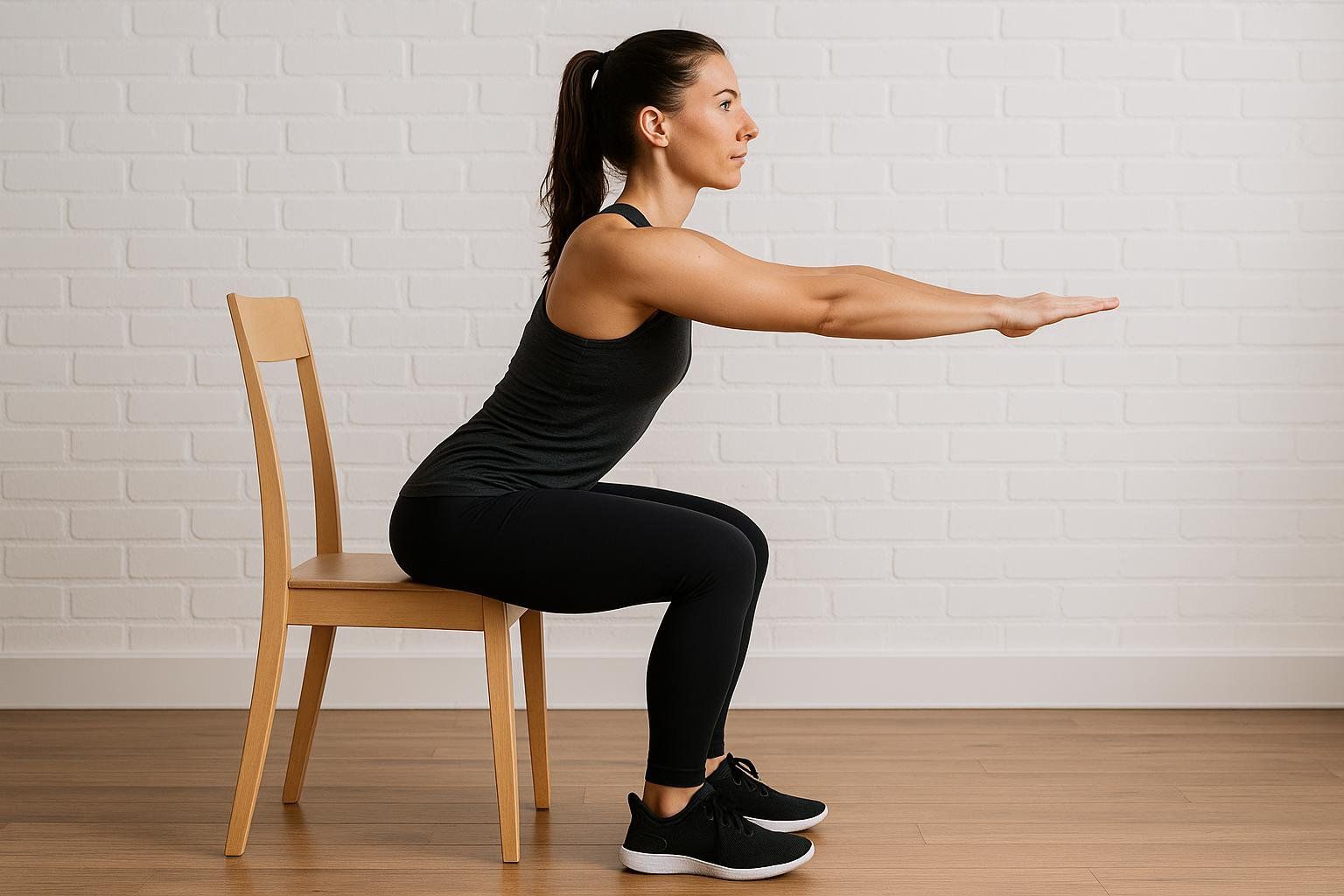
Beginner: Chair Squat
How to:
- Stand with feet hip-width apart, toes slightly out, in front of a chair.
- Inhale, engage core, and push hips back as if sitting while keeping chest up and knees tracking over toes.
- Lightly tap the chair with glutes, then drive through heels to stand tall, squeezing glutes at the top.
Progression Ladder:
- Air Squat (remove chair)
- Jump Squat (add explosive jump)
- Bulgarian Split Squat (rear foot elevated to challenge one leg)
- Pistol Squat (single-leg full range)
Muscles: Quads, glutes, core
4. Hinge Pattern
Beginner: Glute Bridge
How to:
- Lie on back, knees bent, heels a foot from glutes, arms at 30° angle.
- Drive through heels, squeeze glutes, and lift hips until knees, hips, and shoulders form a straight line—avoid arching the lower back.
- Pause for a breath at the top, then lower under control.
Progression Ladder:
- Hip Thrust (upper back on chair for more range)
- Single-Leg Hip Thrust (combine range with unilateral load)
- Bodyweight Good Morning (standing hinge with hands behind head)
- Kickstand Romanian Deadlift (rear foot lightly taps the ground for balance)
- Bodyweight Single-Leg Romanian Deadlift (full single-leg hinge)
Muscles: Glutes, hamstrings, lower back
5. Lunge & Step Pattern
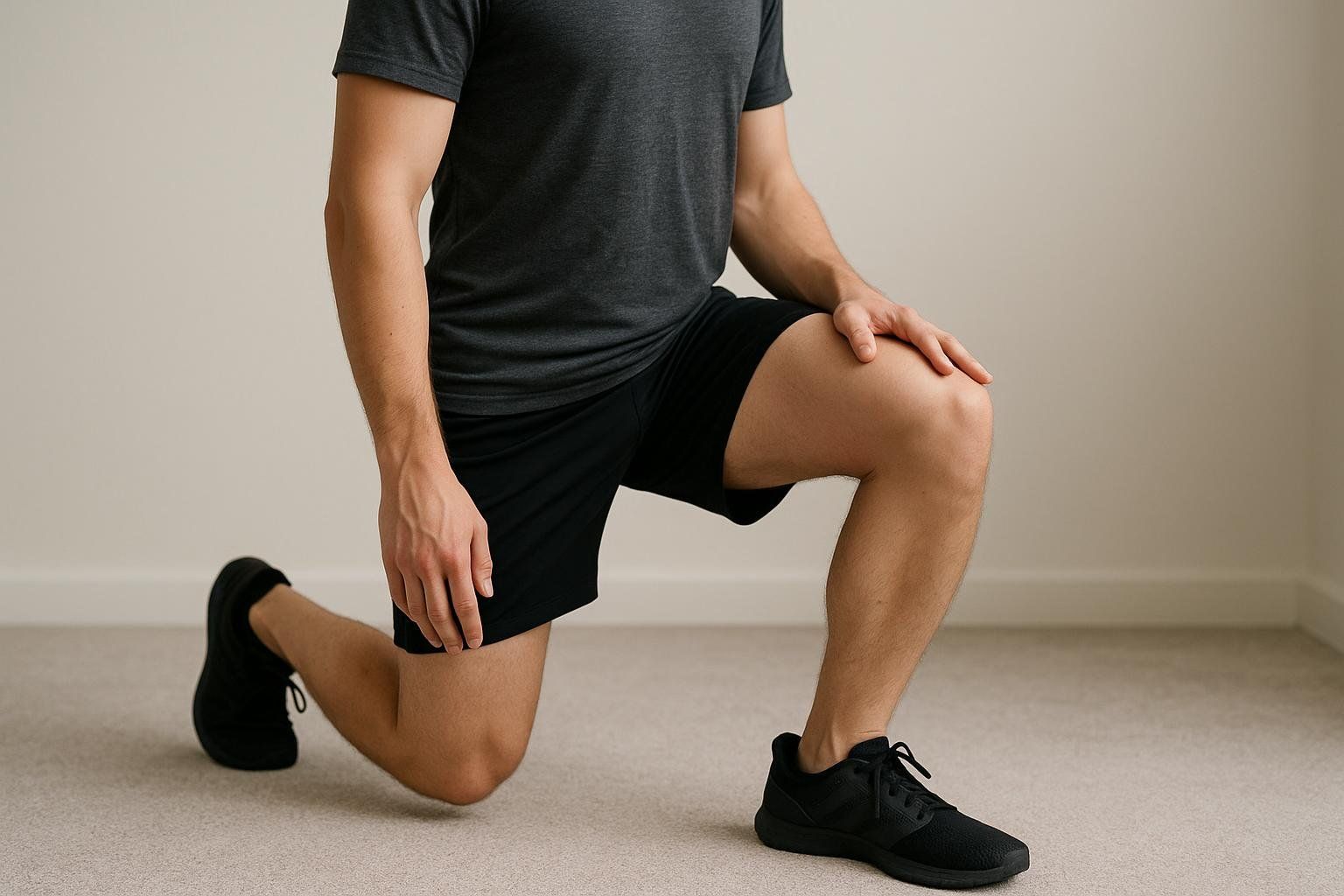
Beginner: Forward Lunge
How to:
- Stand tall, core braced, step one foot forward about two feet.
- Lower until both knees hit ~90°, front knee stacked over ankle, back knee hovering above floor.
- Push through front heel to return, keeping torso upright and hips square; alternate sides.
Progression Ladder:
- Reverse Lunge (step backward for more glute focus)
- Jumping Lunge (switch legs explosively)
- Skater Squat (rear foot hovers, balance challenge)
- Shrimp Squat (rear foot held behind glutes for deeper knee flexion)
Muscles: Quads, glutes, adductors, core
6. Core Stability & Planks
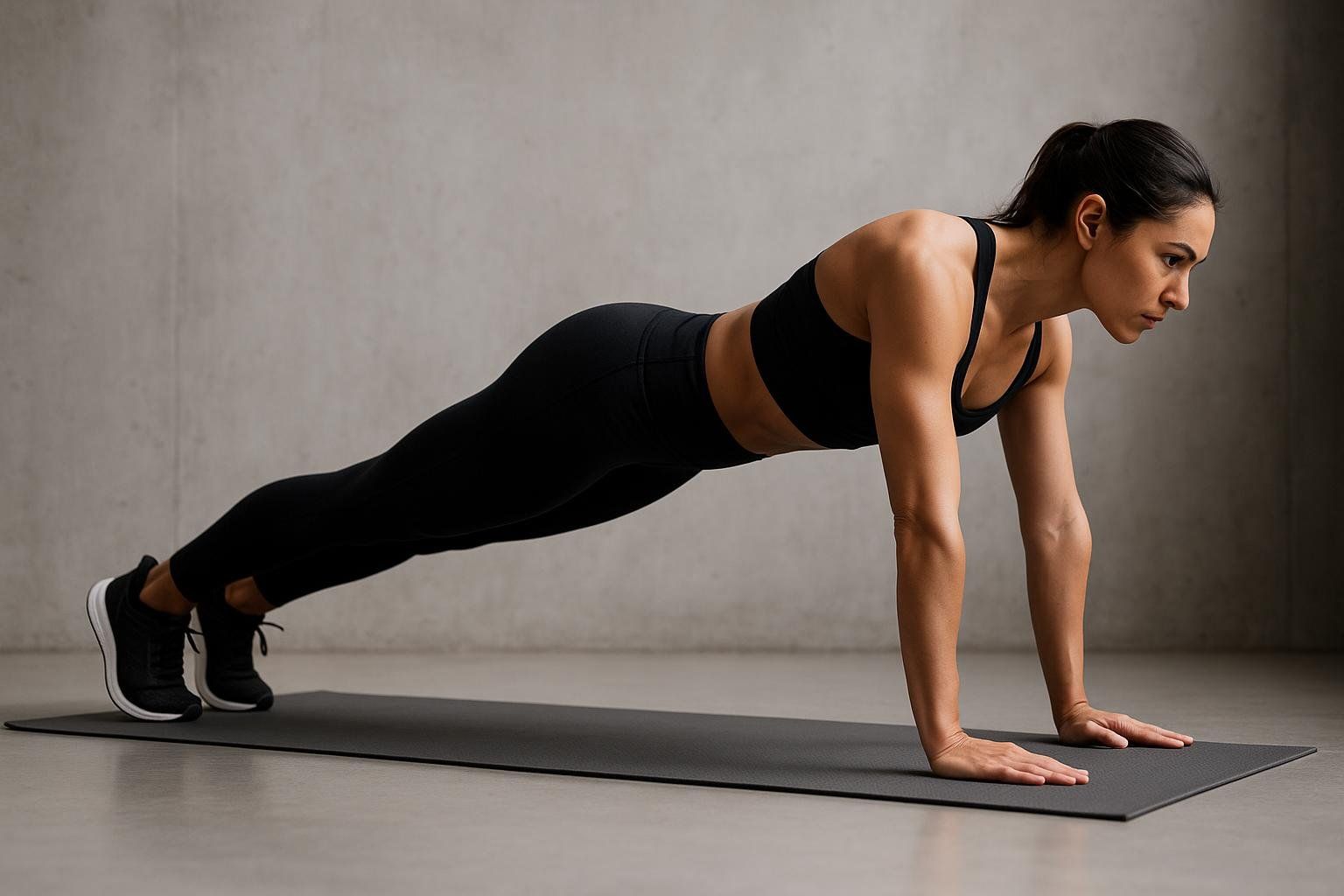
Beginner: High Plank
How to:
- Set hands under shoulders, feet hip-width.
- Squeeze glutes and draw rib cage down to flatten lower back—think “tuck tail.”
- Press elbows forward slightly to engage serratus and hold, breathing steadily.
Modification: If high planks cause wrist discomfort, substitute with the Dead Bug exercise (lying on your back while extending opposite arms and legs).
Progression Ladder:
- Plank Shoulder Tap (lift one hand, fight rotation)
- Long-Lever Plank (hands reach forward to lengthen lever)
- Plank Walkout (walk hands forward and back while hips stay level)
- Hollow Hold (ribs down, legs/arms extended) — advanced core stability
Muscles: Rectus abdominis, transverse abdominis, shoulder stabilizers
7. Side Core & Rotational Control
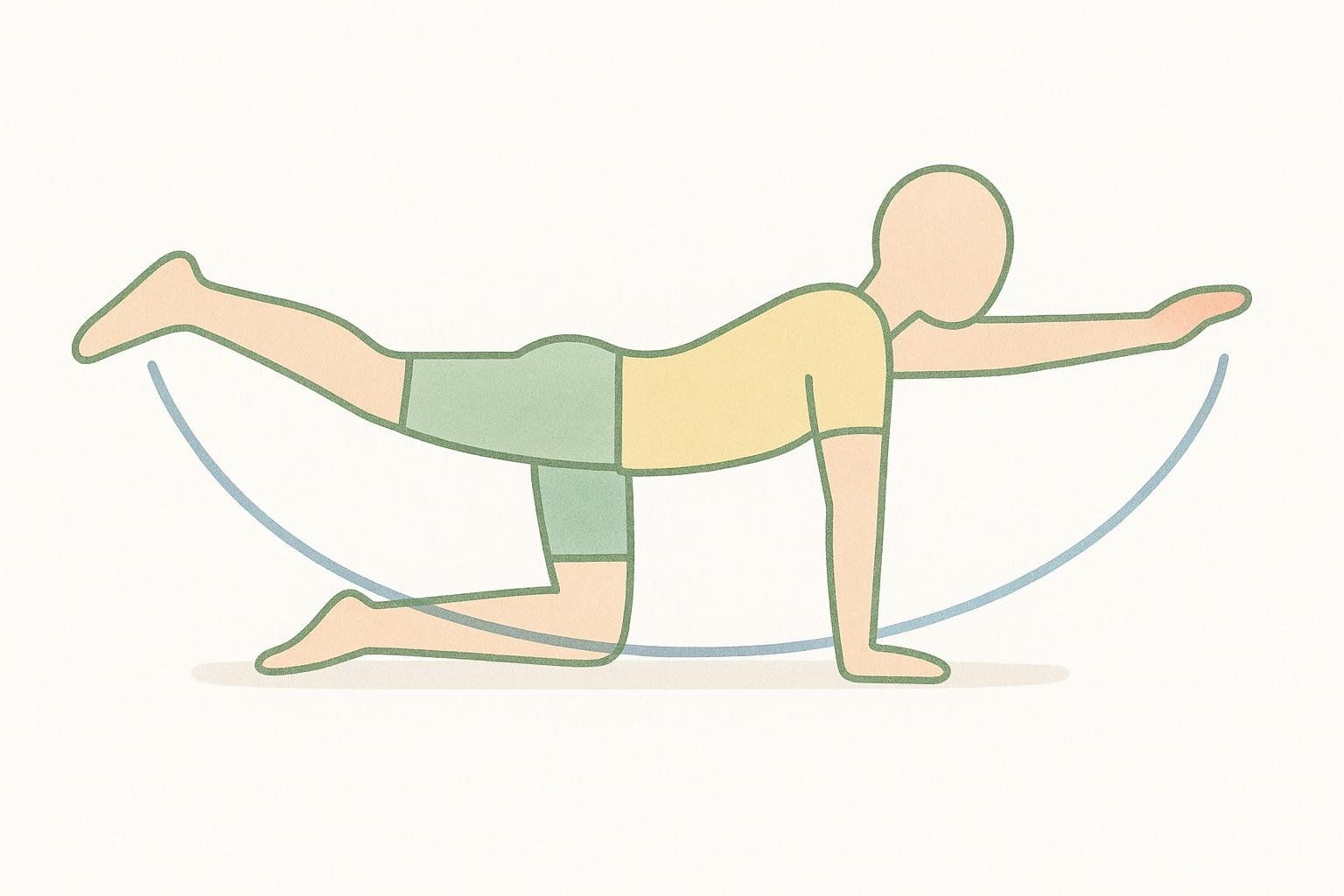
Beginner: Bird Dog
How to:
- Start on all fours, hands under shoulders, knees under hips.
- Brace core, extend opposite arm and leg until they form a straight line with torso.
- Pause, resisting any hip or shoulder twist, then return and switch sides.
Progression Ladder:
- Side Plank (support on one forearm/foot)
- Side Plank with Hip Lift (add hip dip and lift)
- Side Plank with Leg Lift (lift top leg to increase lever length)
Muscles: Obliques, deep core stabilizers, hip adductors
8. Full-Body Power
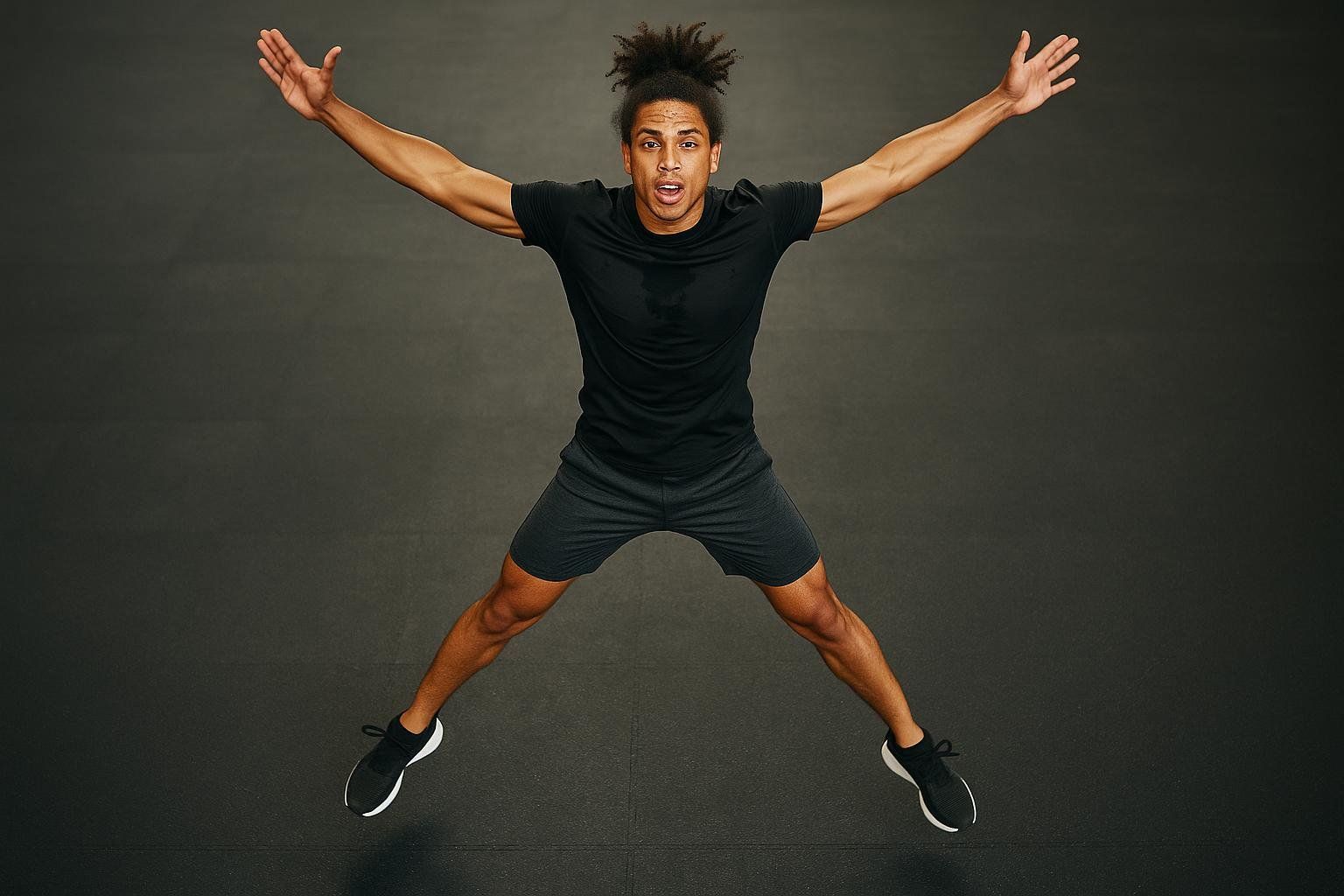
Beginner: Jumping Jack
How to:
- Stand with feet together, arms at sides.
- Jump feet wide while swinging arms overhead.
- Land softly and return to the starting position.
Progression Ladder:
- Jump Squat (quarter squat into explosive vertical jump)
- Broad Jump (maximum-distance horizontal leap)
- Burpee Broad Jump (burpee plus a forward broad jump)
- Plyo Push-Up (push off the ground so hands leave the surface—a staple of plyometric training)
Muscles: Glutes, quads, calves, chest, triceps; cardiovascular system
Sample Bodyweight Exercise Routines

Beginner 20-Minute Circuit (2 rounds)
Perform one exercise after the other with minimal rest (<15 seconds). After completing all five moves, rest 60–90 seconds before starting the next round.
- Air Squat × 12
- Knee Push-Up × 10
- Glute Bridge × 15
- High Plank × 30 s
- Jumping Jack × 30 s
Intermediate 20-Minute EMOM (Every Minute on the Minute)
At the top of each minute, complete the reps listed, then rest for the remainder of that minute. Continue for 20 minutes (10 rounds).
- Odd minutes: 5 Push-Ups + 5 Air Squats
- Even minutes: 6 Inverted Rows
Advanced Athlete Challenge
Complete 3 rounds as quickly as possible while maintaining good form.
- Pistol Squat × 8/leg
- Archer Push-Up × 10
- Single-Leg Romanian Deadlift × 10/leg
- Hollow Hold × 45 s
- Burpee Broad Jump × 10
Rest a maximum of 90 seconds between rounds.
Frequently Asked Questions
Are bodyweight exercises enough to build muscle?
Yes—provided you push close to muscular fatigue. Research shows that sets performed near failure, even at lighter loads, can stimulate muscle growth comparable to heavy lifting, according to a 2017 systematic review and meta-analysis in Sports Medicine.
How many days per week should I train?
Aim for 3–4 full-body sessions, allowing at least 48 hours between intense efforts for the same muscle groups.
Is 20 minutes of exercise effective?
Absolutely. The CDC’s Physical Activity Guidelines (aligned with ACSM) recommend accumulating at least 150 minutes of moderate-intensity or 75 minutes of vigorous-intensity activity weekly. Five 20-minute vigorous circuits meet that benchmark.
How do I progress when moves get easy?
Slow the tempo, increase range (e.g., deficit push-ups), reduce your base of support, or graduate to unilateral versions.
Track Your Progress with Data, Not Guesswork
Subjective wins—looser jeans, faster mile times—are great, but nothing beats seeing your muscle and fat mass change in black-and-white DEXA data. Find a DEXA scan near you to verify that your home workouts are truly adding lean mass and trimming fat.
By mastering foundational movements and applying progressive overload anywhere, anytime, you’ll build strength, athleticism, and confidence—no gym required.
